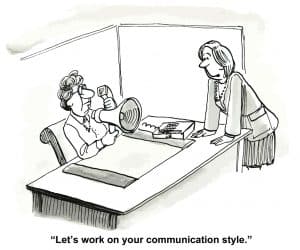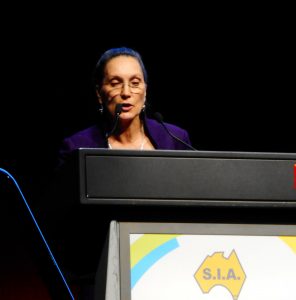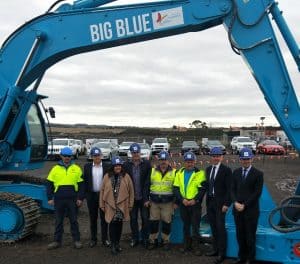Western Australia’s Parliament heard more about the State’s investigation into work-related mental health on June 26 2018.
Category: psychiatric
Old school OHS – eliminating workplace risks at the source
 Safe Work Australia’s work-related psychological health and safety guidance focusses on the elimination risks and hazards, as required under Australia’s workplace health and safety laws. But a slight technical change in the legislation when it moved from occupational health and safety (OHS) to work health and safety (WHS) impedes its successful acceptance.
Safe Work Australia’s work-related psychological health and safety guidance focusses on the elimination risks and hazards, as required under Australia’s workplace health and safety laws. But a slight technical change in the legislation when it moved from occupational health and safety (OHS) to work health and safety (WHS) impedes its successful acceptance.
Australia’s Work Health and Safety laws dropped a reference in the Act’s Objects that would have provided considerable support to work-related mental health and this guidance.
A strong attack on work-related psychological health and safety
The guidance on workplace psychological health and safety forecast by Safe Work Australia’s Peta Miller was released on June 14 2018. There is potential for this guidance to change how mental health is managed and, most importantly, prevented in Australian workplaces.
 It is important to note that “Work-related psychological health and safety – a systematic approach to meeting your duties” has been developed with the involvement and approval of all of Australia’s occupational health and safety (OHS) or work health and safety (WHS) regulatory bodies. Workplace mental health promoters and resilience peddlers are unlikely to find much support in this document as the prevention of harm is the benchmark.
It is important to note that “Work-related psychological health and safety – a systematic approach to meeting your duties” has been developed with the involvement and approval of all of Australia’s occupational health and safety (OHS) or work health and safety (WHS) regulatory bodies. Workplace mental health promoters and resilience peddlers are unlikely to find much support in this document as the prevention of harm is the benchmark.
The guidance is also intended to operate in support
The data for workplace mental health exists, if we demand it
 Data about occupational health and safety (OHS) and work-related psychosocial injuries has often been described as being hard to find. In some ways it is not necessarily hard to find but difficult to access. An untapped source of data is the records of illness and leave taken that is usually held by the Human Resources (HR) departments, often named “People and Culture”or some variant. This type of data could be invaluable in determining a workplace psychological profile, if the HR departments would trust OHS professionals more, or release this data in a format that would allow OHS professionals to assess risks while maintaining employees’ privacy.
Data about occupational health and safety (OHS) and work-related psychosocial injuries has often been described as being hard to find. In some ways it is not necessarily hard to find but difficult to access. An untapped source of data is the records of illness and leave taken that is usually held by the Human Resources (HR) departments, often named “People and Culture”or some variant. This type of data could be invaluable in determining a workplace psychological profile, if the HR departments would trust OHS professionals more, or release this data in a format that would allow OHS professionals to assess risks while maintaining employees’ privacy.
Beware, Generalisations Ahead
In Australia, employees are usually entitled to ten days’ sick leave, five of which require a medical certificate. This means that one of the forty-eight expected working weeks may be taken off by workers with no reason provided to the employer other than a call or a text saying “I’m not coming into work today because I am not feeling well.” Australian slang describes this as “chucking a sickie”.
Preview of Australia’s new work-related psychological injuries guidance
 Peta Miller has worked at Safe Work Australia (SWA) for around 17 years. She leaves there at the end of June. One of her last public appearances for SWA was the National Health and Safety Conference in Melbourne in May 2018 at which she provided an outline of the new work-related psychological injuries guidance that has been signed-off by SWA but not yet released to the public.
Peta Miller has worked at Safe Work Australia (SWA) for around 17 years. She leaves there at the end of June. One of her last public appearances for SWA was the National Health and Safety Conference in Melbourne in May 2018 at which she provided an outline of the new work-related psychological injuries guidance that has been signed-off by SWA but not yet released to the public.
This guide is said to be a large one but not one that requires a re-education on safety and psychological terms. There is discussion about applying the risk management Hierarchy of Controls to psychosocial hazard identification, the prevention of psychological harm through the design of good work and the identification of psychological hazards without the need to diagnose a medical condition.
The OHS context of the Robert Doyle case

The number of prominent men who have come a cropper as a result of their sexual harassment includes the Lord Mayor of Melbourne, Robert Doyle. A workplace safety trade show in Melbourne recently conducted a public panel seminar on the issue of sexual harassment with particular emphasis on the Doyle case. One of the Melbourne councillors at the time, Stephen Mayne, spoke via video. The panel also included a representative of local government, a safety advocate and a lawyer.
One of the most curious elements of this event was that it was conducted in a trade show
Still treating the symptoms of mental health

Suicide prevention continues to be a growth area in rainsingfund-raising and awareness raising. On 17 May 2018, Prime Minister Malcolm Turnbull released a video supporting a treadmill challenge in support of suicide prevention. It seems an odd campaign when there have been various walks and other events in the past that have more of a public statement that being on a treadmill in a gym. But this is not the only odd suicide awareness event. Last week, Winslow Constructions had a program launch that was also a little odd and a campaign that is worthwhile, as far as it goes.
In May 2018, Winslow Constructions held a media event on one of its residential construction projects to the north of Melbourne.
